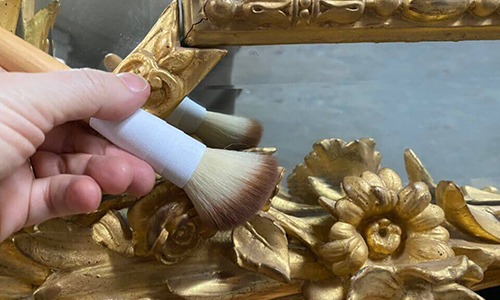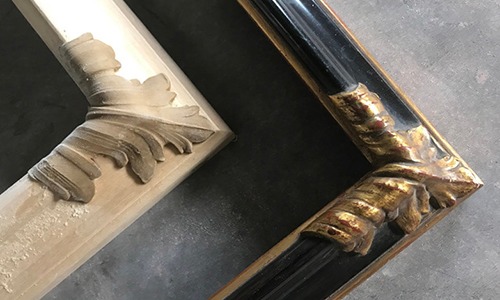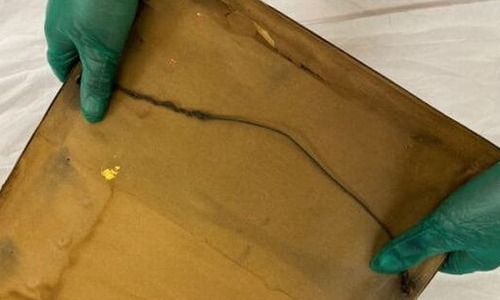Emergency Care
Bookworms
Insect Infestation in Books
By April Hann Lanford
Bookworms, Insect Infestation in Books
By April Hann Lanford
While the connotation of a bookworm is that of a voracious reader, there are insects that actually feed on books. Books are inherently inviting and vulnerable, given their construction of organic materials such as paper, cardboard, starch-based binding adhesive, cotton, and leather. If left unattended, insects can lead to a significant amount of damage.
Bookworms are not actually worms.
Beetles
One of the primary causes of damage to books is caused by several species of beetles. Interestingly, the majority of the damage is not caused by the adult beetle, but by its larvae. The adult lays its eggs within accessible crevices in the book. As the larvae develop, it feeds off of the starch in the paper and eventually may bore through sections of the text block. This can result in the appearance of holes and channels. The larvae can look like a worm at different stages, and it is believed how the term “bookworm” originated.
Silverfish
Another common culprit is silverfish. Silverfish are a nuisance to not only books but any paper-related items. These insects feed off the adhesive in bindings and on paper. Damage from these insects resembles skinning and shallow losses along the surface, to irregular elongated holes and losses along the edges.
Termites
While typically known to be significantly detrimental to wood, they can also quickly cause damage to the covers and bindings on books.
Book Lice
These small white insects tend to infest damp and moldy books and feed on the mold and fungi within the text block.
Prevention
Fortunately, there are a few ways to easily safeguard your collection and avoid unwelcome guests.
Storage
Climate-controlled environment – Like fine art, antiques, and furniture, it is best to avoid fluctuations in climate and generally maintain a 70-degree temperature with 50% RH.
Do not store packed in basements or attics – These areas are typically more prone to pests. They also are not climate controlled and are prone to water damage.
Do not store directly boxed on the floor – Items stored on the floor are vulnerable to pests and water damage. Items should always be elevated at least 3” off from the floor.
On Display
On a shelf – When possible, books on display can be better monitored for signs of insect activity. Books on a shelf have better air circulation and are less apt to get damp and then develop mold, which invites pests and degradation.
Clamshell boxes – While books are displayed, they are sensitive to exposure to sunlight, dust, and other environmental exposures. As an additional safeguard, fragile or unique volumes can be stored in archival clamshell boxes to provide additional protection.
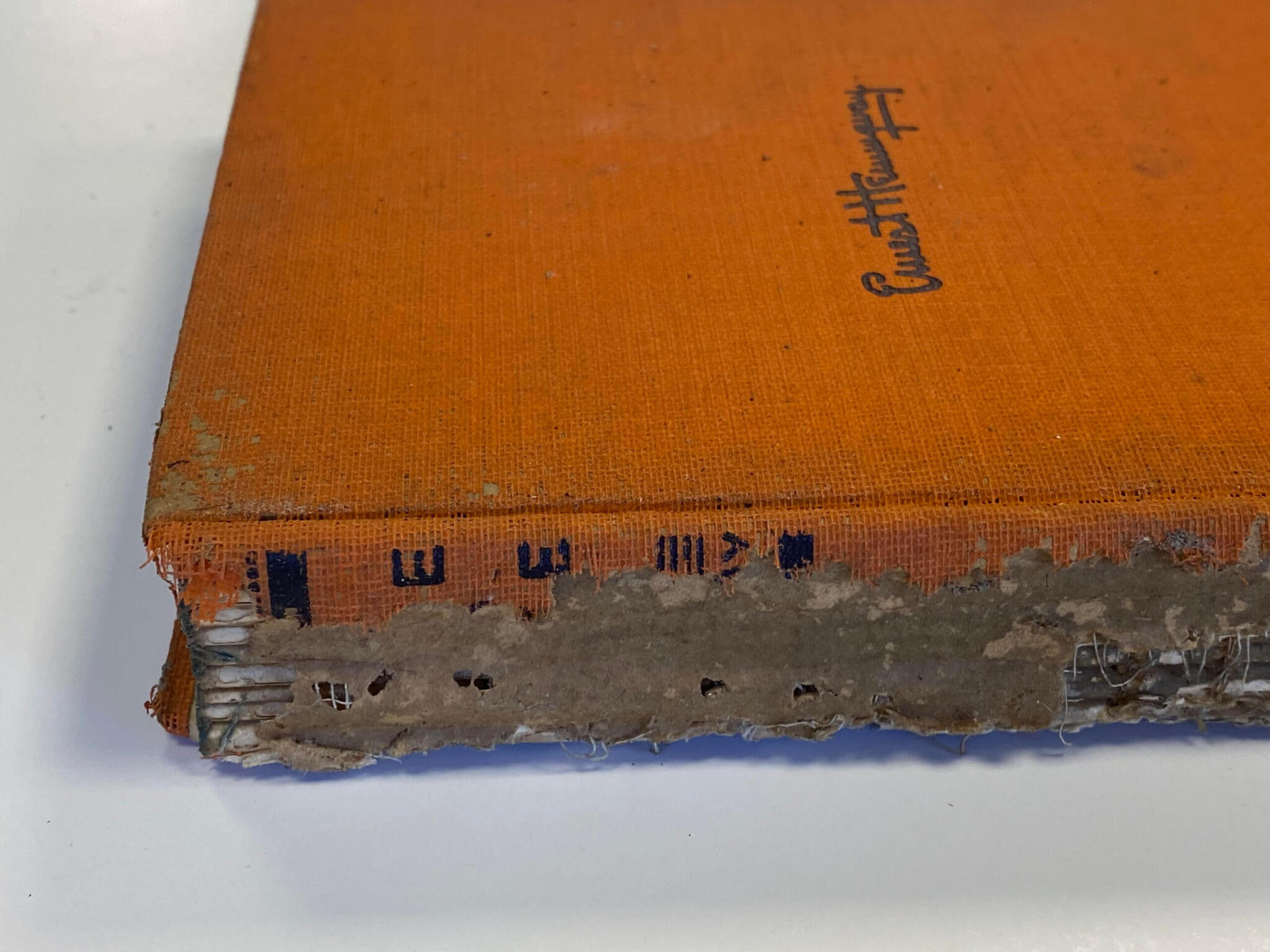
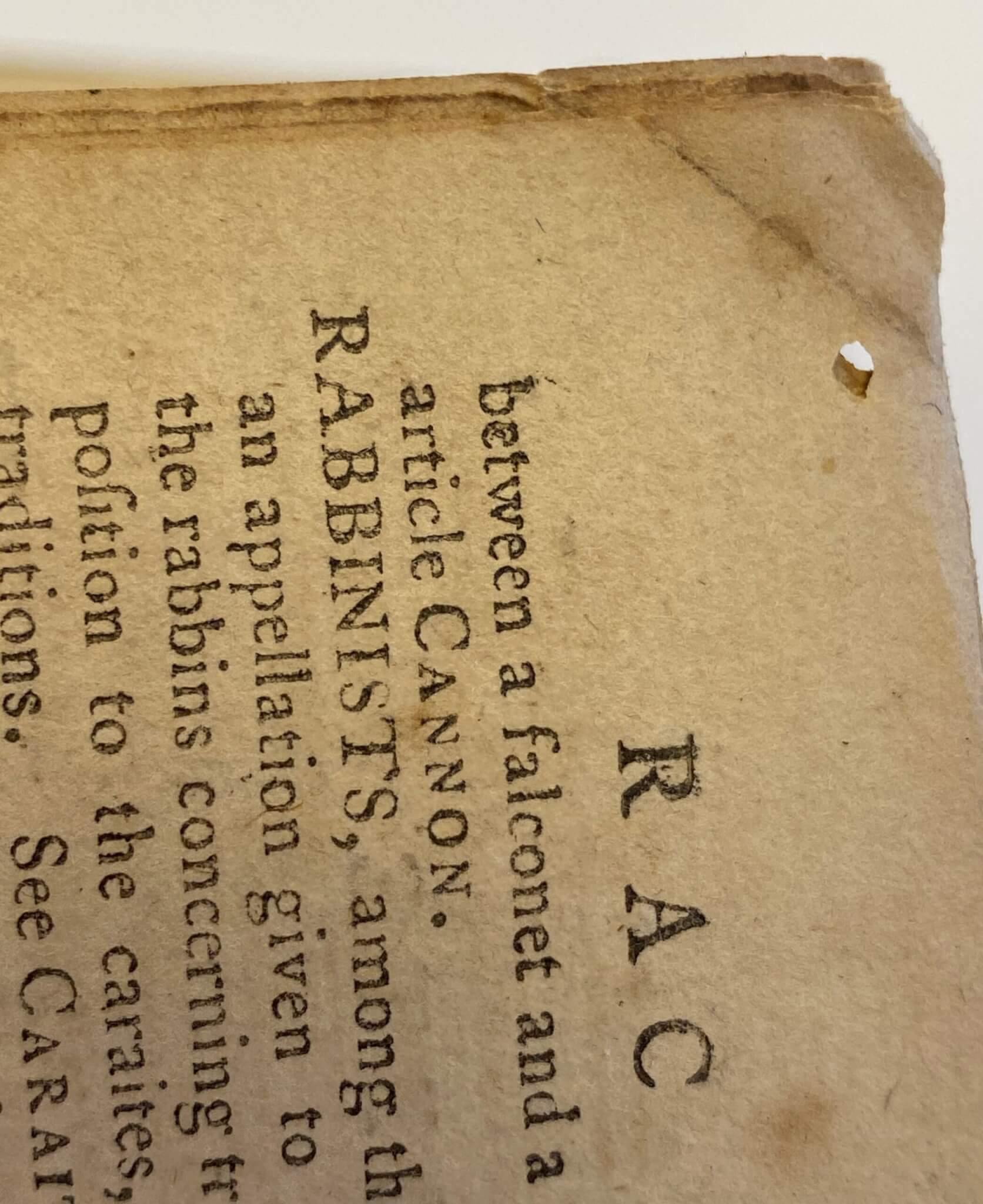

Eradication
If you discover an infestation, there are a variety of potential options. Given that each case is different, you should contact a specialist to determine the best path forward.
A-Fumigation
Pesticide should never be applied to a book or paper, it could cause staining and further deterioration of the piece. Contact a specialist to determine if the area where the infested piece should be addressed.
B-Anoxic Treatment
The item is placed within an air-tight chamber. The oxygen is gradually depleted from the chamber.
This is the most passive approach and is preferred since it does not expose the piece to chemicals.
This approach is a gradual process and has the longest turnaround time for treatment.
D-Freeze/Thaw Cycle
The item is wrapped, frozen, and then thawed. To ensure the infestation is eradicated, the cycle is often repeated. This treatment does not require exposure to chemicals.
Final Steps
After the infestation has been successfully eradicated, the piece should be cleaned to remove any extraneous debris, insect casings, etc. on the surface. Areas of structural instability should be consolidated and stabilized to ensure that the book is not further compromised when handled in the future.
Fortunately, over time, binding materials have evolved in the 20th century to help deter insect activity. Proper storage and monitoring your collection while on display are two ways to deter damage.
If you need assistance or have questions about book care or addressing an infestation, please feel welcome to contact us at:
312-344-0331
Our collection of educational articles about
custom framing, collection care, and emergency response are updated regularly.
Click on each topic below for a menu of corresponding articles.
Collection Care Articles
By April Hann Lanford
Our collection of educational articles provides an introduction to many topics about the preservation and conservation of fine art, antiques, and fine furniture.
Topics are often written as a result of questions provided by our clients.
Emergency Care Articles
By April Hann Lanford
Our emergency care articles are a helpful introduction to how to prevent damage through preventative measures or art and antique collections. When a disaster strikes, prompt response and taking the right steps can mitigate further damage.
Antique Trader Articles
By April Hann Lanford
Visit our collection of articles that have been published in Antique Trader.
antiquetrader
For more than 60 years Antique Trader has been inspiring, informing, and entertaining the collecting community with timely...
Projects
By April Hann Lanford
A selection of Artifact’s most recent projects highlighting our conservation and preservation work. We present each unique story describing the conservation process from reviewing the history, cause of loss, and condition to the steps of the treatment.
Glossary
A collection of art and conservation terms along with makers and firms compiled into a glossary and highlighted throughout our website for reference.
We are available to assist you
Main Location
840 N. Milwaukee Ave, Chicago IL 60642
Mon-Fri: 9:00 am - 5:30 pm
Sat: 10:00 am-4:00 pm
Sun: Closed
Complimentary parking is available in the loading zone in front of the building
We can also serve you by appointment at our other locations in the Chicagoland area.
Additional Locations
Schiller Park • Highland Park • Lake Forest • Lincoln Park • Nashville, TN
Copyright 2024, Artifact Services, LLC | An Artmill Group Company
